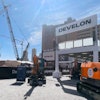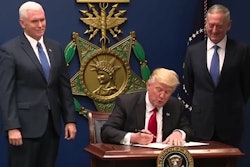
In the latter part of his campaign, then-Presidential hopeful Donald Trump introduced proposals for a $1 trillion investment in U.S. infrastructure and the construction of a multi-billion wall along the U.S.-Mexico border — proposals that not only helped get him elected, but which set Wall Street and the construction business sector soaring on a bubble of euphoria for weeks following his election and inauguration. Optimism among construction firms, whether contractors, dealers, rental houses or equipment manufacturers, has been at an all-time high in anticipation of a significant shot in the arm to all aspects of infrastructure development.
As time has passed, this optimism has begun to settle to a more realistic height, particularly following setbacks in Trump’s agenda and backpedaling on the part of the administration. Although the industry remains hopeful, it’s becoming increasingly unclear if bipartisan support for greater levels of infrastructure spending can overcome the contentious environment on Capitol Hill. And should an agreement be reached, it seems less and less probable that its impacts will be felt in the current calendar year.
At this point, I’m still willing to wager that additional infrastructure investment will eventually come out of Congress. (Further appropriations to support the border wall are far less likely.) Yet, the prospects of reaching anywhere near the $1 trillion mark without a clear funding mechanism in place are low, and will grow lower as federal legislatures pick up debate (again) on how to shore up the failing Highway Trust Fund beyond periodic infusions of cash from the General Fund.
Such an outlook may burst some euphoric bubbles. Yet, there is still much to be optimistic about. Just for starters:
- overall construction activity continues on a modest but stable growth trajectory;
- deregulation should ease development and permitting;
- new pipeline projects will soon be in the works;
- and the transportation infrastructure sector should begin to see increased activity now as we enter Year Two of the five-year highway bill.
Promising developments are also taking place in state legislatures that will help further transportation activity going forward. Last month, Tennessee, Montana, California and Indiana passed legislation to increase the state gas tax to support transportation improvements. According to the American Road & Transportation Builders Association, there are now 21 states that have increased fuel taxes since 2013. This should help to promote growth in highway, bridge and road building and/or repair initiatives in those regions.
And rather than hold out for more federal funds, several states have taken matters into their own hands by passing high-budget transportation and infrastructure initiatives. Perhaps this is what we should expect for infrastructure investment going forward — less federal spending and more initiatives brought forth at the state and local levels.
While "uncertainty" continues to be the watch word in DC, one thing seems evident - infrastructure will continue to be a hot topic throughout the months ahead.



















